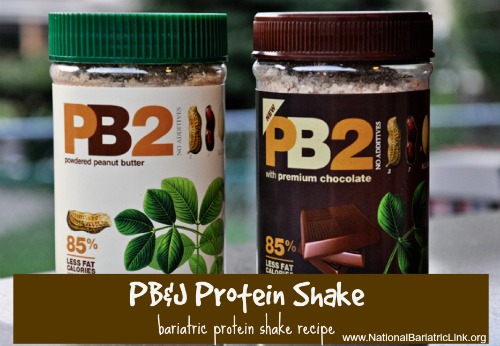Peanut butter… this is a food that I doubt I will ever have the strength to resist. I’ve adored this soft creamy goodness for as long as I can remember, whether eating it straight from the spoon, mixed with jam or syrup, or baked into an irresistible dessert.
Before discussing the protein content in every delectable tablespoon of peanut butter, it’s important to mention the calories and fat content. One tablespoon of this luxurious brown delight holds 94 calories, 72 percent of which is fat and 12 percent is carbohydrates.
These amounts can be significantly more if you’re heaping it on that spoon. However, let’s pretend your spoon has exactly this same amount of peanut butter. Let’s also pretend your favorite creamy peanut butter brand is the same as mine. Did you do the math yet?
It’s not good news… only 16 percent of that tablespoon of peanut butter contains protein.

Don’t Freak Out! I’m not Saying You Can’t Have Peanut Butter!
After Bariatric surgery, you can still enjoy peanut butter… but only in moderation. In fact, many Bariatric patients report using peanut butter to satisfy cravings for something sweet. This is only a good idea for rare occasions when nothing else will curb the craving.
Rather than eat peanut butter straight from the jar using a spoon, try adding a light layer to one half of a banana or dipping apple wedges in peanut butter for a healthier snack, satisfying your craving for peanut butter while taking in less calories.
However, instead of buying your favorite brand of peanut butter, look for a low calorie organic option such as the PB2 Powdered Peanut Butter used in the recipe found at the end of this article. While this product arrives in powder form, it can be made into a paste and used for recipes.
PB2 Powdered Peanut Butter is defatted and dehydrated, making it an excellent product for those watching their weight. This powder peanut butter is also absolutely perfect for protein shakes as one-quarter cup has ten grams of protein, yet only two grams of sugar and three grams of fat.
Bariatric Banana Chocolate Protein Shake Recipe
1 cup low-fat milk or light soy milk
1/4 cup PB2 Powdered Peanut Butter
1/4 cup chocolate whey isolate protein powder
1 banana, sliced and frozen
4-5 ice cubes
Combine all ingredients in the pitcher of your electric blender. Cover and process until smooth and creamy. Enjoy this high protein peanut butter inspired Bariatric treat which provides 38 grams of protein per serving.
PB&J Bariatric Protein Shake Recipe
1 cup Vanilla Soy Milk (or any other milk)
1 scoop Vanilla Protein Powder
1 Tablespoon Sugar Free Torani Raspberry Syrup
1 Tablespoon Sugar Free Strawberry Jam
1 Tablespoon PB2 Powdered Peanut Butter
3-4 ice cubes
Combine all ingredients in the pitcher of your electric blender. Cover and blend until smooth. Top with No Sugar Added Homemade Whipped Cream, optional.


